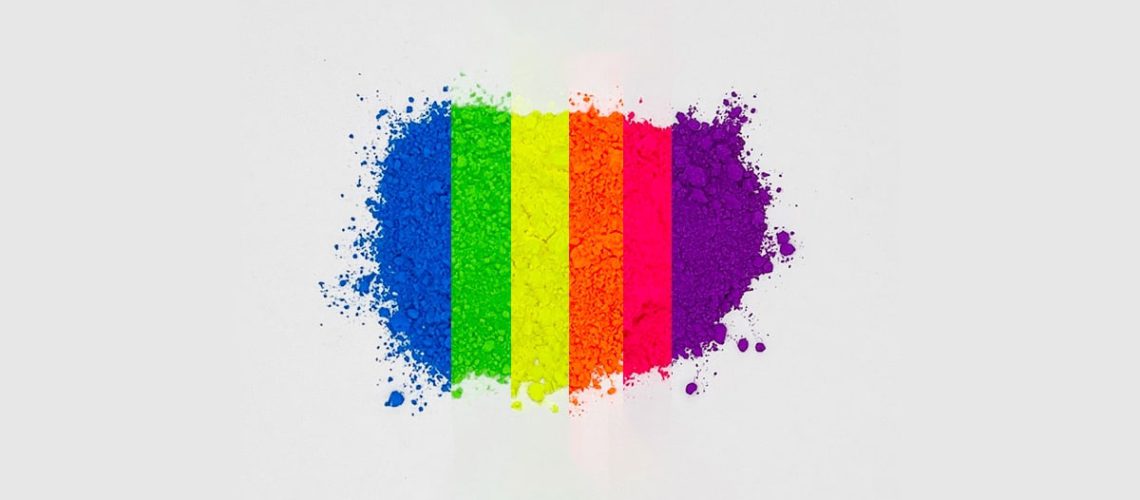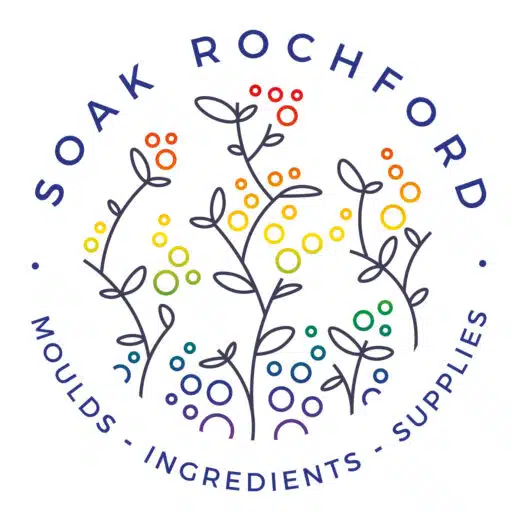
Team Soak Rochford
The Magic Of Mica Powders: Beautiful Cosmetic Additions
- ,
- , Uncategorised
When it comes to adding a touch of glitter for soaps and cosmetics, mica powders are taking the beauty world by storm. These powders, composed of finely ground mica minerals, offer a vast spectrum of colours that range from subtle pastels to bold and vibrant hues. The magical sheen of mica powders has captivated beauty enthusiasts and cosmetic manufacturers worldwide.
Mica powders offer a beautiful range of iridescent colours that add a touch of magic to beauty products. From glitter for soaps to bath bombs supplies, mica powders have become a popular choice among DIY beauty enthusiasts and professional cosmetic manufacturers alike. In this blog, we will explore the fascinating world of mica powders, from their sourcing to their applications, and understand why they have become an indispensable ingredient in the bulk cosmetic supplies industry.
What is Mica Powder?
Mica powder is derived from the naturally occurring mineral called mica. Mica minerals are found in many parts of the world, including India, China, and Brazil. First, these minerals are mined from the earth and then they are carefully processed to obtain the fine powder form. Mica powder is known for its excellent shimmering properties, thanks to the way light interacts with its finely layered structure. It’s the perfect glitter for soaps!
Where does Mica Powder come from?
The process of sourcing mica powder involves mining the mineral from deposits deep within the earth. Mica is typically extracted through open-pit mining, where specific machinery is used to carefully excavate the mineral-rich ore. This mining process involves removing the topsoil and overburden to expose the mica-bearing rock.
Once the ore is exposed, it is carefully blasted and fragmented using controlled explosives. The fragmented rocks are then loaded onto trucks and transported to the processing plant for further refinement.
At the processing plant, the mica ore undergoes a series of processes to extract the mica flakes. The ore is first crushed into smaller fragments to facilitate the separation of mica from other minerals. After crushing, the mica-bearing fragments are subjected to grinding, which further breaks them down into fine particles.
To ensure purity and quality, the ground mica particles are then subjected to various processes such as washing, screening, and magnetic separation. These processes remove impurities and unwanted minerals, leaving behind pure mica flakes.
Once the mica flakes are obtained, they are further processed to convert them into mica powders. This involves micronising the flakes by grinding them into a fine powder form. The micronisation process enhances the shimmering properties of the mica particles, giving them their characteristic luminosity and brilliance.
It’s important to note that responsible sourcing of mica is crucial to ensure ethical and sustainable practices. This is the less magical side to the mica powder industry and in recent years, there has been increased awareness about child labour and unsafe working conditions associated with mica mining in certain regions. Therefore, many companies are actively working towards sourcing mica from ethical and traceable sources, ensuring the well-being of both the environment and the communities involved in the mining process.
By sourcing mica powder through responsible and sustainable practices, cosmetic manufacturers can support the ethical production of this beautiful mineral while creating stunning cosmetic products that capture the magic of mica powders.
Mica Powders vs Pigment Powders
While mica powders are often associated with pigment powders, there are significant differences between the two. Understanding these differences can help cosmetic enthusiasts and manufacturers make informed choices when selecting colourants for their products.
1. Composition
Mica powders are derived from natural minerals, specifically mica, which is a group of silicate minerals with a layered structure. These minerals are mined from the earth and processed into fine powders. On the other hand, pigment powders are synthetic colourants created through chemical processes. They are typically made from a combination of inorganic compounds, organic compounds, or a blend of both.
2. Transparency and Opacity
Mica powders are known for their transparent and translucent properties. When applied to cosmetics, they allow light to pass through the layers of mica particles, resulting in a shimmering effect. Pigment powders offer solid and opaque colours. They provide full coverage and do not allow light to pass through, resulting in a more solid and vibrant colour payoff.
3. Light Reflection
The unique structure of mica particles gives them their characteristic shimmer and iridescence. The parallel layers of mica reflect and refract light, creating a stunning play of colours. This property makes mica powders ideal for creating a lustrous and multidimensional effect in cosmetics. Pigment powders, while offering vibrant colours, do not possess the same light-reflecting properties as mica.
4. Heat Stability
Mica powders are highly heat-stable, making them suitable for use in various cosmetic applications that involve heat, such as soap making and bath bombs. They can withstand high temperatures without losing their colour or shimmer. Pigment powders may vary in terms of heat stability depending on their composition. Some pigments may undergo colour changes or lose their vibrancy when exposed to high temperatures.
5. Versatility
Mica powders offer a wide range of colours, from subtle pastels to bold and vibrant shades. They can be used alone or blended to create custom colours. Additionally, mica powders can be mixed with other cosmetic ingredients, such as oils, waxes, or liquids, to create different textures and effects. Pigment powders also come in a variety of colours, but their opacity limits their versatility compared to the transparent nature of mica powders.
How are Mica Powders added into Soaps or Bath Bombs?
Mica powders are a fantastic addition to soap making or bath bomb supplies, as they can enhance the visual appeal and create captivating designs. Whether you’re a DIY soap enthusiast or a professional soap maker, incorporating mica powders into your creations can add a touch of magic. Here are a few ways to add mica powders in your soap or bath bomb creations:
1. Colouring the Soap Base
One of the most common uses of mica powders in soap making is to add colour to the soap base. Mica powders come in a wide range of vibrant shades, allowing you to create stunning and eye-catching soap bars or bath bombs. Start by selecting the desired mica powder colour(s) and mix them with a small amount of a lightweight carrier oil or glycerin to create a smooth and lump-free mixture. Then, add this mica mixture to the melted soap base and stir well to distribute the colour evenly. Pour the coloured soap into the moulds and let it solidify. The result will be beautifully coloured glitter for soaps and bath bombs.
2. Layering and Swirling Effects
Mica powders can be used to create captivating layered or swirled designs in soap. To achieve this, prepare multiple batches of soap in different colours, each mixed with the desired mica powders. Pour one layer of coloured soap into the mould and let it partially harden. Then, pour another layer of a different coloured soap mixed with a contrasting mica powder. Repeat this process until you have created all the desired layers or swirls. Use a skewer or a swirling tool to create intricate patterns or designs in the soap batter. The result will be visually striking soap bars or beautiful bath bombs with a unique and artistic appearance.
3. Dusting and Embellishments
Mica powders can also be used to add finishing touches to soap bars. Once the soap has hardened and been removed from the moulds, you can lightly dust the surface with a complementary mica powder using a soft brush. This will give the soap a subtle shimmer and enhance its overall visual appeal. Additionally, you can create decorative embellishments by mixing mica powders with a small amount of rubbing alcohol or a clear melt-and-pour soap base. Use this mixture to paint or draw intricate designs on the soap surface, adding an extra touch of creativity and elegance.
4. Customising Soap Shapes
Mica powders can be used to customise the shapes of soap bars by incorporating them into the process of creating embeds for soap decorations. Prepare a small batch of clear melt-and-pour soap base and mix it with the desired mica powder colour(s). Pour this coloured soap into small silicone moulds or shaped moulds and let it harden. Once the embeds are ready, embed them into the main soap base while it is still in a semi-liquid state. This allows you to create intricate designs, such as flowers, hearts, or geometric shapes, within the soap. The result will be visually stunning soap bars with embedded mica-infused decorations.
Bulk Cosmetics Supplies From Soak Rochford
If you’re on the hunt for high-quality soap or bath bomb supplies, mica powders, bath wax, glitter for soaps and more, look no further than Soak Rochford. With a wealth of experience supplying customers of all abilities, we know what it takes to make great soap, from the comfort of your home. What’s more, if you’re thinking of taking your soap making to the next level, we also provide the very best shelf-ready assessments.
To discuss your requirements and start your soap making journey, simply get in touch with a member of our team today.
